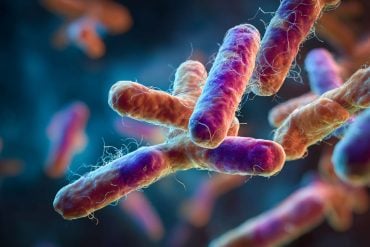Summary: New research uncovers that aging activates a new type of stem cell that rapidly produces fat cells, explaining why belly fat often expands in middle age. Scientists found that aging triggers adipocyte progenitor cells (APCs) to evolve into committed preadipocytes, age-specific (CP-As), which actively generate new fat.
A signaling pathway called LIFR was found to drive this fat-cell proliferation. These findings could lead to future therapies targeting CP-As to prevent age-related fat gain and metabolic diseases.
Key Facts:
- New Fat-Making Cells: Aging triggers the emergence of CP-A cells that produce abundant new fat cells.
- Critical Pathway Identified: The LIFR signaling pathway fuels fat cell formation specifically in middle age.
- Potential Therapy Target: Blocking CP-As could help reduce age-related belly fat and extend healthspan.
Source: City of Hope
It’s no secret that our waistlines often expand in middle-age, but the problem isn’t strictly cosmetic. Belly fat accelerates aging and slows down metabolism, increasing our risk for developing diabetes, heart problems and other chronic diseases.
Exactly how age transforms a six pack into a softer stomach, however, is murky.
Now preclinical research by City of Hope, one of the largest and most advanced cancer research and treatment organizations in the United States and a leading research center for diabetes and other life-threatening illnesses, has uncovered the cellular culprit behind age-related abdominal fat, providing new insights into why our midsections widen with middle age.
Credit: Neuroscience News
Published today in Science, the findings suggest a novel target for future therapies to prevent belly flab and extend our healthy lifespans.
“People often lose muscle and gain body fat as they age—even when their body weight remains the same,” said Qiong (Annabel) Wang, Ph.D., the study’s co-corresponding author and an associate professor of molecular and cellular endocrinology at City of Hope’s Arthur Riggs Diabetes & Metabolism Research Institute, one of the world’s foremost scientific organizations dedicated to investigating the biology and treatment of diabetes.
“We discovered aging triggers the arrival of a new type of adult stem cell and enhances the body’s massive production of new fat cells, especially around the belly.”
In collaboration with the UCLA laboratory co-corresponding author Xia Yang, Ph.D., the scientists conducted a series of mouse experiments later validated on human cells. Wang and her colleagues focused on white adipose tissue (WAT), the fatty tissue responsible for age-related weight gain.
While it’s well-known that fat cells grow larger with age, the scientists suspected that WAT also expanded by producing new fat cells, meaning it may have an unlimited potential to grow.
To test their hypothesis, the researchers focused on adipocyte progenitor cells (APCs), a group of stem cells in WAT that evolve into fat cells.
The City of Hope team first transplanted APCs from young and older mice into a second group of young mice. The APCs from the older animals rapidly generated a colossal amount of fat cells.
When the team transplanted APCs from young mice into the older mice, however, the stem cells did not manufacture many new fat cells. The results confirmed that older APCs are equipped to independently make new fat cells, regardless of their host’s age.
Using single-cell RNA sequencing, the scientists next compared APC gene activity in young and older mice. While barely active in young mice, APCs woke up with a vengeance in middle-aged mice and began pumping out new fat cells.
“While most adult stem cells’ capacity to grow wanes with age, the opposite holds true with APCs — aging unlocks these cells’ power to evolve and spread,” said Adolfo Garcia-Ocana, Ph.D., the Ruth B. & Robert K. Lanman Endowed Chair in Gene Regulation & Drug Discovery Research and chair of the Department of Molecular & Cellular Endocrinology at City of Hope.
“This is the first evidence that our bellies expand with age due to the APCs’ high output of new fat cells.”
Aging also transformed the APCs into a new type of stem cell called committed preadipocytes, age-specific (CP-As). Arising in middle age, CP-A cells actively churn out new fat cells, explaining why older mice gain more weight.
A signaling pathway called leukemia inhibitory factor receptor (LIFR) proved critical for promoting these CP-A cells to multiply and evolve into fat cells.
“We discovered that the body’s fat-making process is driven by LIFR. While young mice don’t require this signal to make fat, older mice do,” explained Wang.
“Our research indicates that LIFR plays a crucial role in triggering CP-As to create new fat cells and expand belly fat in older mice.”
Using single-cell RNA sequencing on samples from people of various ages, Wang and her colleagues next studied APCs from human tissue in the lab.
Again, the team also identified similar CP-A cells that had an increased number in middle-aged people’s tissue. Their discovery also illustrates that CP-As in humans have high capacity in creating new fat cells.
“Our findings highlight the importance of controlling new fat-cell formation to address age-related obesity,” said Wang.
“Understanding the role of CP-As in metabolic disorders and how these cells emerge during aging could lead to new medical solutions for reducing belly fat and improving health and longevity.”
Future research will focus on tracking CP-A cells in animal models, observing CP-A cells in humans and developing new strategies that eliminate or block the cells to prevent age-related fat gain.
The study’s first authors are City of Hope’s Guan Wang, Ph.D., and UCLA’s Gaoyan Li, Ph.D.
About this weight gain and aging research news
Author: Letisia Marquez
Source: City of Hope
Contact: Letisia Marquez – City of Hope
Image: The image is credited to Neuroscience News
Original Research: Closed access.
“Distinct adipose progenitor cells emerging with age drive active adipogenesis” by Qiong A. Wang et al. Science
Abstract
Distinct adipose progenitor cells emerging with age drive active adipogenesis
INTRODUCTION
Adipose tissue plays a crucial role in regulating various hormonal and metabolic processes and demonstrates substantial compositional and phenotypic plasticity. From middle age to early aging, adults often experience a notable increase in visceral adipose tissue mass.
Visceral adiposity is believed to be an important risk factor for various metabolic disorders. The accumulation of adipose tissue occurs through two primary mechanisms: adipocyte hypertrophy and adipogenesis. However, the mechanisms by which early aging contributes to adipose tissue accumulation remain poorly understood.
RATIONALE
Adipogenesis is the process by which new adipocytes are generated through the proliferation and differentiation of adipose progenitor cells (APCs). Previous reports suggested that APCs exhibit a reduced capacity for adipogenesis in aged humans or rodents in an in vitro, two-dimensional (2D) culture setting.
In this work, we used in vivo lineage tracing mouse models, 3D profiling of APC transplants to monitor adipogenesis of APCs up to middle age, and single-cell RNA sequencing to identify distinct types of APCs generated during this life stage.
Functional assessments of these age-specific APCs provide insights into how adipogenesis contributes to visceral adipose tissue accumulation during middle age and early aging.
RESULTS
At 12 months old, male mice gained body weight due to increased adipose tissue mass, especially in the visceral site. By contrast, female mice only had moderate body weight gain.
Tracking adipogenesis in lineage-tracing mouse models revealed that in contrast to the low turnover rate of adipocytes in young adults, more than 80% of adipocytes were newly generated in the visceral adipose tissue of 12-month-old male mice fed a standard chow diet.
Along with this massive adipogenesis, middle-aged mice developed adipocyte hypotrophy, visceral adiposity, reduced energy expenditure, and insulin resistance. 3D profiling of APC transplants quantitatively showed that APCs in middle-aged mice had a much higher adipogenic rate than those in young mice, indicating that these APCs cell-autonomously obtain higher adipogenic potential.
Single-cell RNA sequencing of APCs then identified a new committed preadipocyte population that is age enriched (CP-A), both in mice and humans. CP-As displayed high proliferation and differentiation capacities, both in vitro and in vivo.
The number of CP-As in the visceral adipose tissue increased when mice were 9 months old, peaked when they were 12 months old, and then sharply declined when they were 18 months old. Leukemia inhibitory factor receptor (LIFR) was identified as a functional marker of CP-A. Pharmacological inhibition and genetic manipulations indicated that LIFR is indispensable for CP-A adipogenesis.
The inhibition of LIFR did not affect the adipogenesis of young APCs, indicating that LIFR signaling is specifically required for CP-As. Lastly, chronic treatment with a LIFR inhibitor during early aging prevented the expansion of visceral fat in mice.
CONCLUSION
Integrating in vivo lineage-tracing, 3D profiling of transplants, and single-cell RNA sequencing, our work reveals that adipogenesis of APCs contributes greatly to the visceral adipose tissue expansion during middle age.
The discovery of CP-A as an age-specific APC population, along with the validation of its high adipogenic capacity both in vitro and in vivo, and the identification of LIFR signaling as a CP-A–specific adipogenic mechanism enhance our understanding of the early aging process in fat tissue.
A key finding from our work is that despite the low turnover rate of adipocytes in young adults, adipogenesis is unlocked during middle age.
The increase of adipogenic capacity in APCs distinguishes these cells from most other adult stem cells, which typically exhibit a reduced capacity to proliferate and differentiate with age.
Moreover, as the enhancement of adipogenesis and emergence of the CP-A population happens primarily in the male visceral adipose tissue and only during middle age and early aging, these events are location, stage, and sex specific.
Our findings offer a fundamental understanding of the pathophysiology of age-related metabolic disorders, which may have critical implications for preventing and treating age-related diseases, thereby promoting healthy aging.








